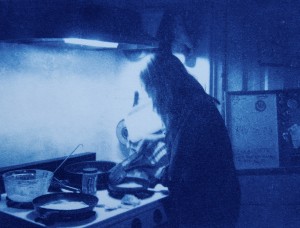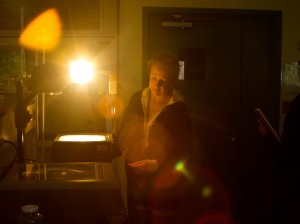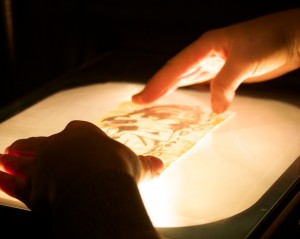I’m a physical chemist in the physics program with a long-standing personal interest in art history. I’m teaching a new course this semester about the chemistry of photography. Since the goal of the course is to understand the chemistry of light-sensitive materials, the first four weeks have stressed light and color, ionic and covalent compounds, and chemical reactions. Alongside these topics, we’ve studied, and made, dichromate prints, cyanotypes, and diazo prints. In contrast to conventional photography, none of these processes involve silver.
In the cyanotype process, a paper coated with a yellow light-sensitive solution is exposed to sunlight. Within a few minutes, ultraviolet light induces the formation of an iron compound known as Prussian blue in exposed areas. It’s quite magical. The cyanotype process was invented by the renowned astronomer Sir John Herschel in the 1840s. Prussian blue itself is part of another story. Discovered in the early 1700s, it is the first modern artificial pigment and displaced ultramarine and cobalt blue from artists’ palettes.

We’re now moving on to the chemistry of silver-based photography using a wonderful book by Roger Bunting called The Chemistry of Photography. The highlight of this week’s experiment is making a silver mirror. Next week, we’ll make salted paper prints, the precursor to silver/emulsion photography.
Photos and cyanotype: Kazio Sosnowski

